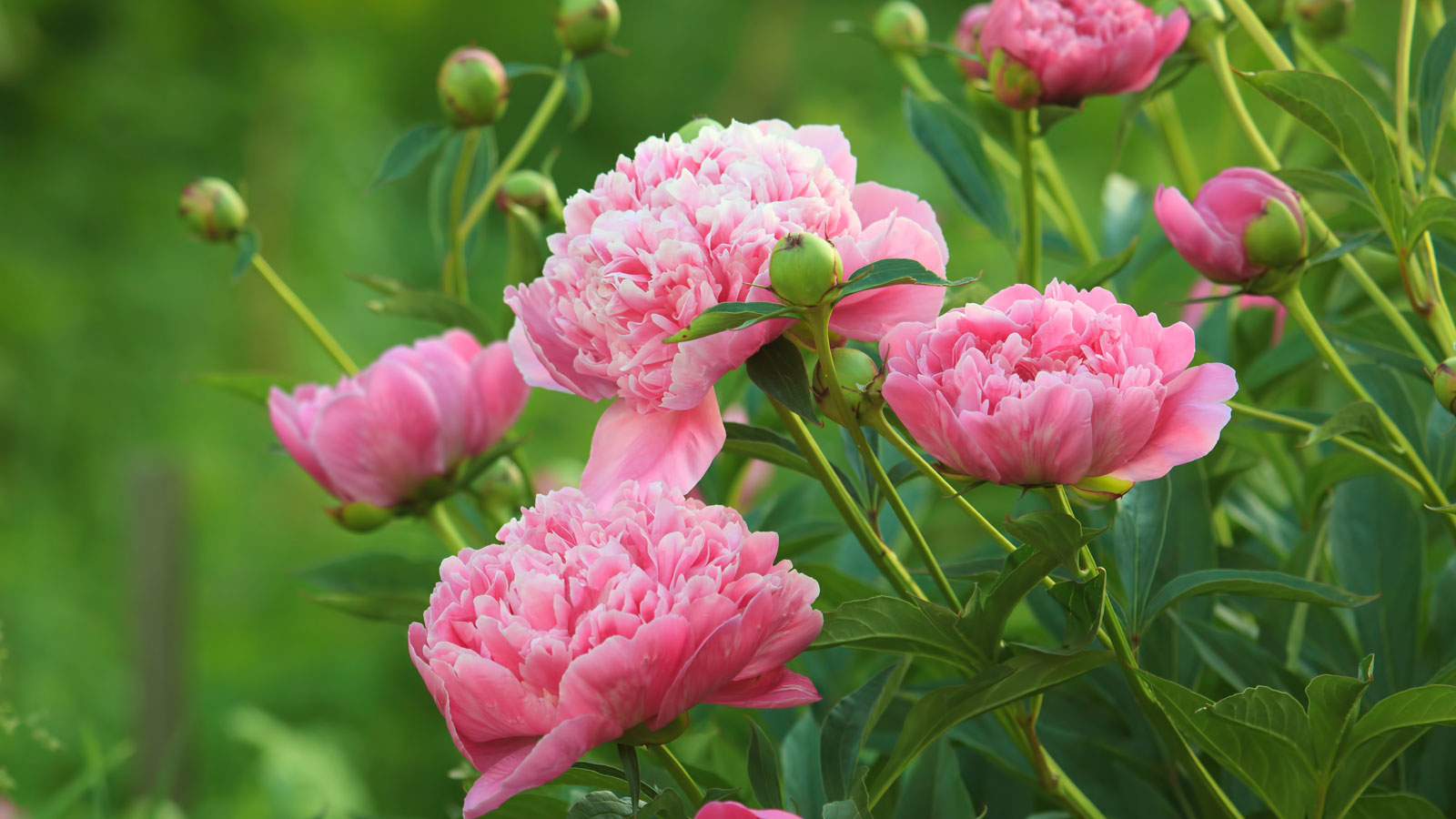How and when to fertilize peonies – for more beautiful blooms
Give these beauties a feed when they need it most and you'll soon be rewarded with strong growth and lots more flowers


Q: I recently bought a new peony for my backyard. This is in addition to a couple of peonies I already have. The problem is neither of my existing peonies have had as many flowers as I hoped they would, and I don't want to make the same mistake with my new plant. I'm not sure whether it's necessary to fertilize them to help them produce more blooms. If I do need to fertilize them, when is the best time and how should I do it?
A: Peonies are beautiful plants that are popular for their huge, showy blooms in early summer. They are relatively easy to look after, too, as long as you don’t attempt to move them. Once established they resent being disturbed and will repay you by not blooming for a couple of years. Keep on top of their other main requirements too. They like moist but well-draining soil, so remember to keep them watered during any hot weather spells.
They also love being pampered, so if your existing plants are proving to be a little sulky on the flowering front you may need to fertilize them, along with your latest peony addition, which will benefit too. So it's a good idea to find out how and when to fertilize peonies to get the best out of your plants.
How to fertilize peonies
Give peonies rich, fertile soil, and they will thrive and reward you with plenty of flowers. To promote growth, apply a general-purpose fertilizer each year in spring. Then mulch with a layer of garden compost or well-rotted manure in fall to enrich the soil they're planted in.
'Fertilize peonies with a high potassium fertilizer to suit strong flower development such as a 5-10-5 ratio,' says Ben Hilton, founder of The Gardening Fix. 'Or you can apply a balanced 10-10-10 fertilizer. This ensures that your plants get the correct levels of nitrogen, phosphorus, and potassium. Nitrogen promotes foliage growth while phosphorus and potassium encourage healthy, vibrant flower production.' This Expert Gardener all-purpose fertilizer from Amazon would be suitable as it has a 10-10-10 ratio – this refers to the plant fertilizer numbers usually listed on the label.
It's also important to apply a slow-release fertilizer that will continue to provide nutrients and feed the plant over time, according to Ben. This can be achieved by using a granular top dressing, as opposed to a liquid feed. If you're using a natural bone meal fertilizer or chicken manure, you can apply it throughout the growing season without risk of over-fertilizing your peony plants.

Ben is founder and editor-in-chief of Theyardandgarden.com and Thegardeningfix.com, which provide valuable insights, tips, and advice on everything from plant care and growing to landscape design.

If peonies are fertilized correctly your plants will have dozens of gorgeous blooms
When to fertilize peonies
Peonies should be fed twice a year. First, when you see new shoots emerge in the spring but before the flower buds start to show, then again in fall to build strong roots on your plant ahead of winter.
Design expertise in your inbox – from inspiring decorating ideas and beautiful celebrity homes to practical gardening advice and shopping round-ups.
'It's best to fertilize peonies in the early spring, just before the buds start to swell,' says Lindsey Hyland of Urban Organic Yield. 'In the fall, you can apply a top dressing of compost or aged manure but avoid high-nitrogen fertilizers so your plant doesn't put out too much vegetative growth and neglects to flower.'
First water the soil around the plant thoroughly. After you have applied the fertilizer, being careful to avoid touching your peony's stems or leaves, water the area again to help the nutrients sink into the soil.
Follow a spring and fall fertilizing routine for the first few years after planting a peony. Then you can ease off as peonies should only need fertilizing every three years or so, and if they're really thriving you can stop completely.

Peonies should be fertilized in spring and fall
FAQS
Will fertilizing get more flowers on my peonies?
If your peonies aren't blooming there are several things you can do to give them a boost and get more flowers. Remember the simple formula that great soil plus the right plant food and a good watering routine in hot weather equals the best care combination for your peonies.
Try enriching the soil. 'To encourage flowering give peony plants a dressing of general fertilizer or bone meal in fall and repeat in spring on poor soils,' says Homes & Gardens expert Anne Swithinbank. 'Mulch over roots, but not over the crowns.'
Fertilizers designed to promote flowering can be beneficial. Look for formulas with higher phosphorus levels, which can help encourage flower production.
'Deadheading faded flowers will help promote new shoots and increase flower production throughout the season,' says Ben Hilton. 'So keep an eye on the plant and remove any flowers that are past their best.'

Anne Swithinbank is one of the world's most established gardening experts and horticulturalists. Anne contributes regularly to Homes & Gardens and our sister title, Amateur Gardening.
What are the best fertilizers for peonies?
If your peonies don’t produce buds and flowers, or don’t have very many, the problem could be the fertilizer. While you won’t find a specialist peony fertilizer as such in garden centers or online, bulb and perennial fertilizers both work well. Choose a balanced fertilizer or one that is lower in nitrogen, as it encourages leafy growth and fewer buds.
'Balanced, slow-release fertilizers contain equal amounts of nitrogen, phosphorus, and potassium and are a good choice for most peonies,' says gardening expert Richa Kedia of Nurserylady.com. 'Slow-release formulas gradually release nutrients, which can help prevent over-fertilization.
This GreenView Multi-Purpose Fertilizer from Amazon is a balanced fertilizer with an equal amount of nitrogen, phosphorus, and potassium.
Fertilizing peonies is generally a good thing but be sure to follow the label closely and avoid overdoing it. And remember that feeding is just one element of looking after these gorgeous flowering plants – you also need to know when to cut back peonies, deadhead them and keep on top of their watering needs if you're going to grow healthy and happy plants.

Lifestyle journalist Sarah Wilson writes about garden design and landscaping trends for Homes & Gardens. She has studied introductory garden and landscape design, and also has an RHS Level 2 qualification in the Principles of Plant Growth and Development. She is a regular contributor to Homes & Gardens and Livingetc. She has also written for Country Living, Country Homes & Interiors, and Modern Gardens magazines